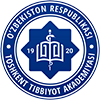On February 11 of this year, a conference was held at the 1st Clinic of Tashkent Medical Academy on the topic “Modern Approaches to the Prevention and Treatment of Multifocal Atherosclerosis and Circulatory Diseases.”
The event was attended by professors, specialists in the field, students, and members of the media.
At the conference, scientists from Tashkent Medical Academy presented evidence-based findings on genetic factors leading to atherosclerosis and disruptions in cholesterol metabolism. Experimental studies conducted on rabbits and rats were discussed, along with the results of scientific research being carried out under the framework of the fundamental project titled “Clinical-Biochemical, Morphological and Pathogenetic Issues of Multifocal Atherosclerosis and Circulatory Diseases, Their Complications, Diagnosis, and Treatment.”
During the practical part of the conference, the organizers provided local journalists with information about new developments in patient treatment — specifically regarding the accurate diagnosis of circulatory diseases. A presentation was held on the Cerebrocardiomyopoligraph device, which plays an important role in diagnosing brain strokes and forecasting the course of the disease.
– This modern diagnostic device simultaneously assesses the functional state of both damaged and healthy brain tissues, compares changes in the heart and paralyzed muscles, and allows for monitoring and analyzing treatment effectiveness,” says Professor Maksud Asadullaev of the Department of Neurology and Medical Psychology at Tashkent Medical Academy. “The introduction of such treatment and diagnostic equipment into practice creates the conditions for patients to recover more quickly. Studying angiographic changes, strokes, and pre-stroke conditions in depth, comparing results obtained through modern biochemical and coagulological equipment, and implementing the most effective treatment methods into practice are among the key achievements in the field of healthcare. With this device, we aim to reduce the mortality rate among stroke patients.
Indeed, nowadays, in order to prevent the aforementioned diseases, detect them early, and treat them effectively, more in-depth scientific research and the development of new technologies are required. Therefore, scientific studies in this field are also crucial for developing new methods to prevent, diagnose, and effectively treat diseases with a high risk of mortality.
Translate: Uzb




